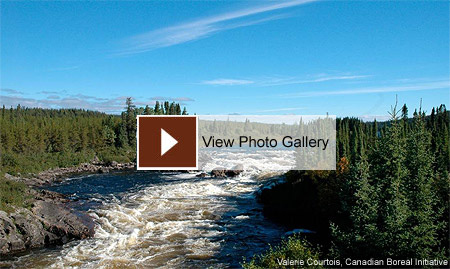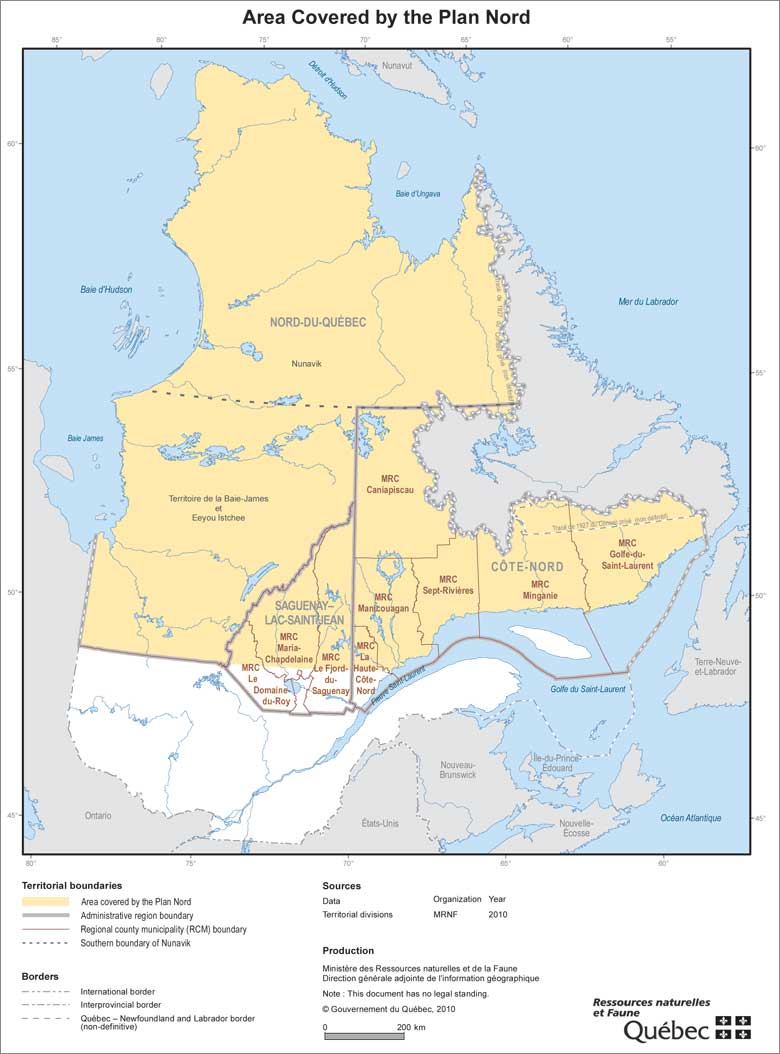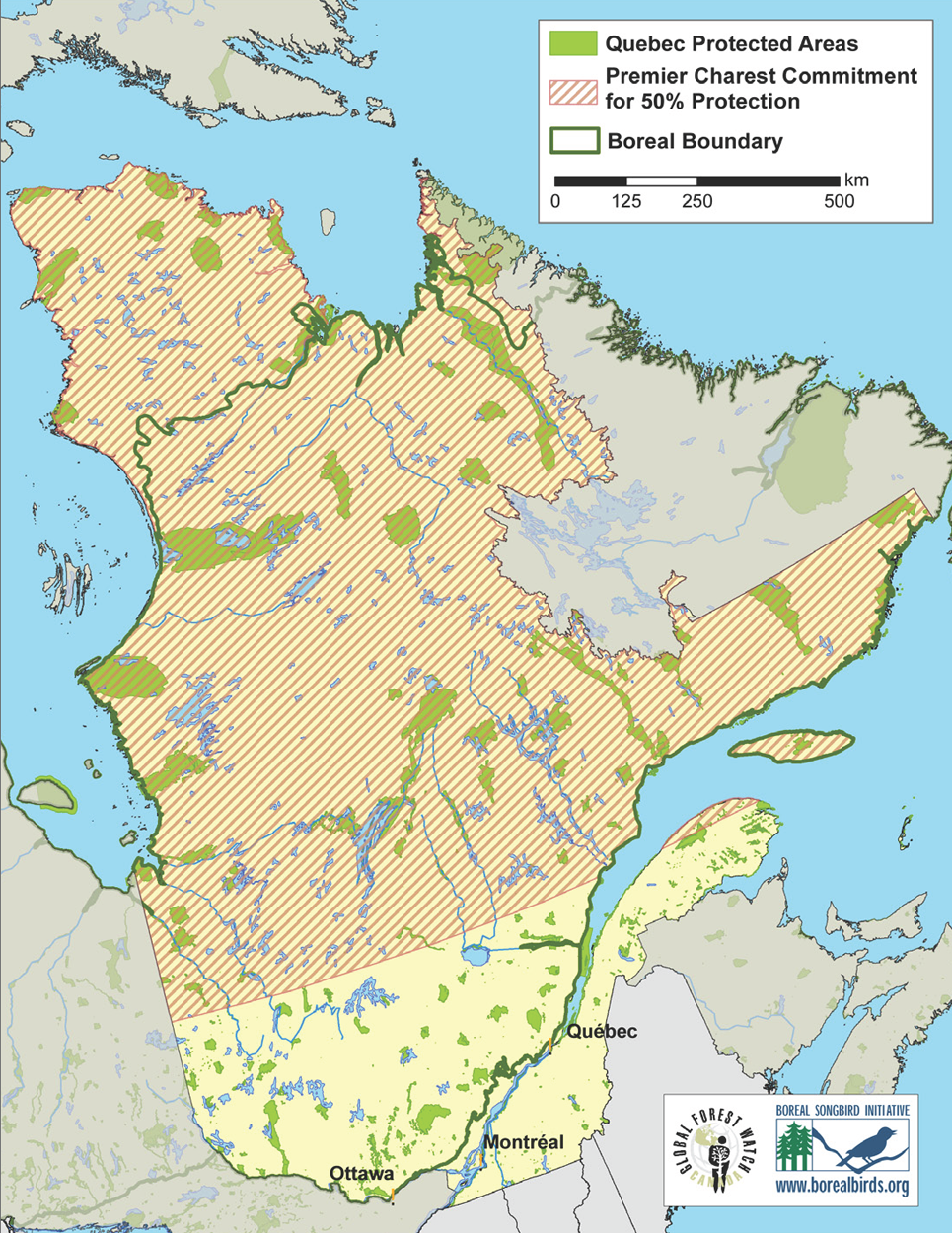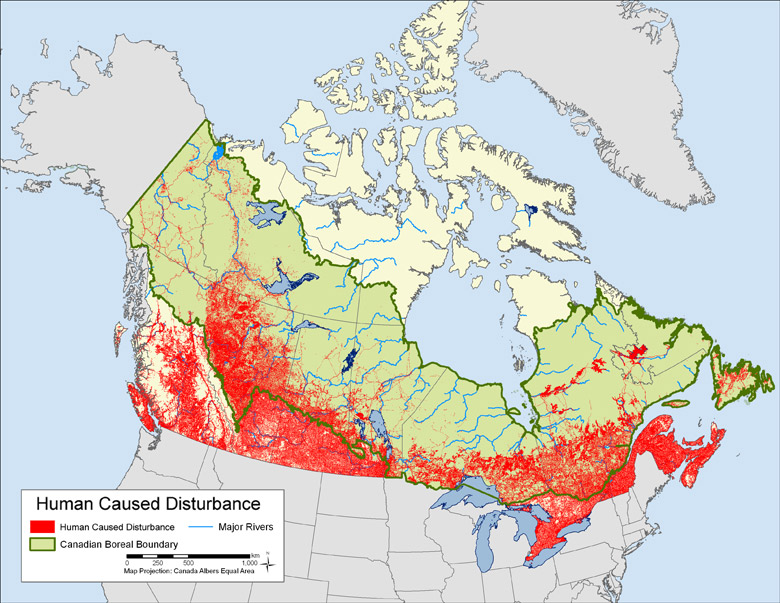Quebec Boreal Legislation Would Fulfill Vision of 'New Global Model' for Conservation
Mathew Jacobson, manager of the Pew Environment Group's International Boreal Conservation Campaign in Quebec, issued the following statement today in reaction to the Quebec government's release of draft legislation to implement the "Plan Nord," a sustainable development initiative for the province's 460,000-square-mile northern forest region (maps). The area is home to a significant portion of the Canadian boreal, the Earth's largest intact forest ecosystem and its largest storehouse of carbon.
"Quebec has introduced legislation today that would create the single largest land conservation plan in history. This combination of conservation and development measures is designed to meet the needs of the frontier region. Once enacted, it would guide a generation of responsible economic progress." By bringing together businesses, scientists, conservationists, aboriginal leaders and local communities to identify ways to balance environmental and economic interests on a landscape scale, Quebec has created a new global model for sustainable development.
"If Quebec stays on this bold course and continues to work in partnership with aboriginal communities, it will position itself as a leader in responsible economic development. Conservationists, who have argued for years that doing the right thing for the environment will benefit the economy, should support this approach."
Background
On May 9, 2011, Quebec Premier Jean Charest released "Plan Nord," a 25-year policy for Quebec's boreal region, which makes up the northern two-thirds of the province. The plan would:
- set aside half of the province's boreal territory (more than 230,000 square miles, an area about the size of Texas) from all industrial activity;
- apply sustainable development standards to the rest and respect existing rights and treaties with the region's aboriginal communities.
The Plan Nord endorses extensive new mining and hydroelectric projects, as well as 80 billion Canadian dollars in public and private investments.
Quebec's Boreal Forest:
- is 1.2 million km2 (297 million acres) in size – twice the size of France.
- comprises 21% of Canada's Boreal Forest.
- stores 31 billion tonnes of carbon in its soils, peat and forests – an amount equivalent to 158 years of Canada's annual carbon emissions.
- supports more than 25% of Canada’s woodland caribou.
More on Canada's Boreal Forest
-
Video: Canada's Boreal Forest Gaining Ground
-
Report: The Carbon the World Forgot
-
Photo Gallery:Canadian Boreal Forest

Maps

Map Credit: Quebec Government

Map Credit: Global Forest Watch Canada and Boreal Songbird Initiative

Map Credit: Global Forest Watch Canada











